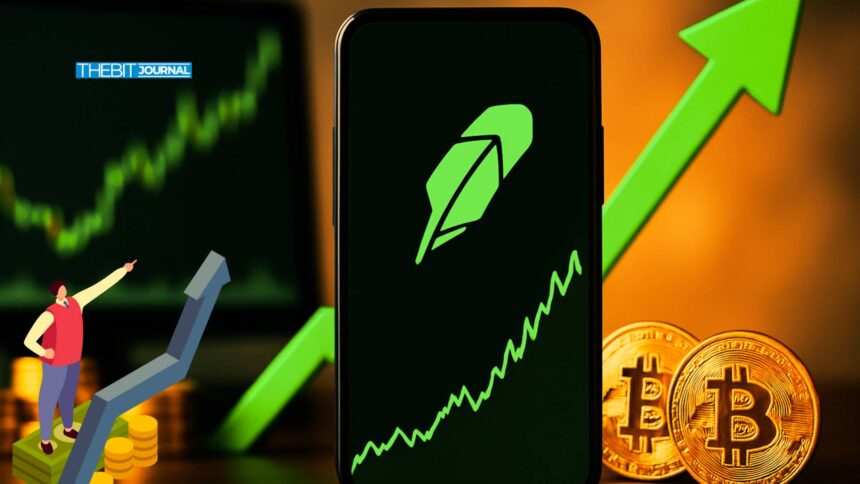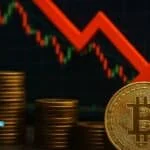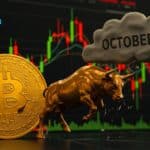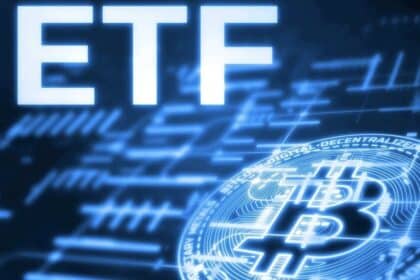According to sources, Robinhood Q2 2025 earnings show strong growth in both the company’s finances and crypto business. Total revenue went up 45% compared to last year, reaching $989 million. This jump was mainly because of better crypto trading and the smart move to buy Bitstamp.
The results were better than what Wall Street expected and show that Robinhood is no longer just a trading app; it’s now growing into a global financial platform, especially in Europe and big crypto markets.
What Drove the Upside in Robinhood Q2 2025 Earnings?
The big rise in Robinhood Q2 2025 earnings mainly came from a 98% jump in crypto revenue, which hit $160 million in the second quarter. This happened because more people were trading, and Robinhood added more crypto services.

Overall, the company’s crypto trading volume grew by 32%, reaching $28 billion for the quarter. According to fintech analyst Priya Menon, the rise in crypto activity wasn’t just a short-term spike; it showed real, long-term growth.
She explained that Bitstamp gave Robinhood the size, trust, and regulatory licenses that would have taken the company years to get on its own.
How Did Bitstamp Shape Robinhood’s Global Crypto Strategy?
Bitstamp’s $7 billion in trading volume played a major role in boosting Robinhood Q2 2025 earnings. The deal gave Robinhood access to over 50 regulatory licenses and allowed it to offer crypto services in 30 European countries.
This helped the company to quickly launch staking features in both the U.S. and Europe and roll out its USDG stablecoin in the EU. Even though the Bitstamp deal added $65 million in operating costs, Robinhood Q2 2025 earnings still showed solid profits.
The company’s adjusted EBITDA margin was 56%, proving that its expansion strategy is working well and remains cost-effective.
| Metrics | Q2 2025 | Year-over-Year Change |
| Total Revenue | $989 million | +45% |
| Crypto Revenue | $160 million | +98% |
| Net Profit | $386 million | +105% |
| Earnings Per Share | $0.42 | +100% |
| Robinhood Gold Subscribers | 3.5 million | +76% |
| Funded Accounts | 26.5 million | +10% |
| Net Deposits | $13.8 billion | +25% |
| Total Assets on Platform | $279 billion | +99% |
| Transaction-Based Revenues | $539 million | +65% |
What Role Did Tokenization and Blockchain Play?
A key part of Robinhood Q2 2025 earnings was the company’s increasing focus on tokenization. CEO Vlad Tenev has made blockchain technology a top priority with the launch of Robinhood Chain, which lets users in Europe trade tokenized versions of U.S. stocks and other assets.
“Tokenization helps make finance more accessible to everyone,” Tenev said. This new feature allows users to invest in digital versions of private companies, including those inspired by big names like OpenAI and SpaceX. But some legal issues have come up, as Lithuania’s financial authority is now checking if these tokens should be treated like regular securities.
Even with some regulatory concerns, Robinhood is still working on improving its tokenized products. The goal is to give more people access to assets that are usually hard to invest in, like private equity or real estate.
How Did User Activity and Deposits Contribute?
The rise in Robinhood Q2 2025 earnings also came from more user activity. Funded accounts grew by 2.3 million, reaching a total of 26.5 million. Net deposits climbed to $13.8 billion, showing 25% annual growth.

Overall, the platform’s assets nearly doubled to $279 billion, thanks to strong crypto gains and higher asset values.Robinhood Gold, the platform’s premium service, saw its subscribers rise by 76%, reaching 3.5 million users.
Along with an increase in average revenue per user to $151, this shows that Robinhood is getting better at earning more from each customer. “Robinhood is growing into a complete financial platform,” said Mark Hughes, senior analyst at Global Digital Finance. “It has moved beyond being just a trading app and is now offering a wide range of investment options.”
Conclusion
Based on the latest research, Robinhood Q2 2025 earnings clearly show how the company is changing; it’s moving from a U.S.-focused trading app to a global player in digital finance.
With crypto revenue hitting new highs, gaining more international licenses, and exploring tokenized assets, Robinhood is setting itself up for long-term success.
This quarter’s performance proves the company can innovate, adjust, and grow in a fast-changing financial world. If it handles regulatory challenges carefully, Robinhood could help shape the future of fintech.
Summary
Robinhood Q2 2025 earnings rose sharply to $989 million, boosted by a 98% jump in crypto revenue and its Bitstamp acquisition. The deal helped expand crypto services across Europe and added $7 billion in trading volume. User growth, tokenization, and strong deposits also played a big role. Robinhood now has 26.5 million active accounts and 3.5 million users paying for its Gold service. It’s turning into a full financial platform, even though it still has some rules and regulations to deal with.
Explore the latest articles in crypto earnings, regulatory policies, and price predictions on our platform
FAQs
How much are Robinhood Q2 2025 earnings?
$989 million.
How much did crypto revenue grow?
It jumped 98%.
What did the Bitstamp deal bring?
More licenses and access to Europe.
What was the profit margin?
56% adjusted EBITDA margin.
How many users subscribe to Robinhood Gold?
3.5 million subscribers
How big are Robinhood’s total assets now?
$279 billion.
How many funded accounts does Robinhood have now?
26.5 million in Q2 2025.
Glossary
Crypto Revenue – Money Robinhood earns from users trading cryptocurrencies.
Bitstamp Acquisition – Robinhood’s buyout of Bitstamp, a global crypto exchange.
Adjusted EBITDA Margin – A measure of how profitable Robinhood is after costs.
Robinhood Chain – Robinhood’s own blockchain to support tokenized asset trading.
Funded Accounts – Accounts with money ready to trade or invest.
Robinhood Gold – A paid subscription that offers premium tools and features.
Regulatory Licenses – Official approvals that allow Robinhood to operate in global markets.





























